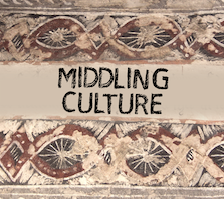In the mid-1560s, artist and writer Lucas de Heere moved to London from Ghent in the Low Countries. In his time in England, he produced works for leading figures at court while working with and teaching aspiring painters. After having lived here some ten years, de Heere compiled a description of England and a run-down of its chief “wonders,” replete with brilliant sketches of contemporary figures in a manuscript (British Library Add MS 28330) that quite literally gives us a picture of life in mid-Elizabethan England.
His images are arresting glimpses into the visual and material culture of the sixteenth century, and accordingly they represent a rich avenue of enquiry for a project such as ours—not least because they depict side-by-side the clothing, details, and practices of Elizabethans from across the social spectrum, from the Mayor and Aldermen of London to barons, MPs, and guardsmen:

In this sketch, de Heere brings together in four figures depictions of urban and provincial life: a wife of a citizen of London, a wife of a wealthy citizen of London, a young daughter, and a country-woman. The sketch therefore represents subtle differences in dress and comportment between degrees or sorts of people—between the wife and the rich wife, the urban citizen and the country dweller. The country-woman is seemingly returning from the market or shops and is well dressed in frill neck and hat, though her white apron signifies a different way of navigating the social world to the city-dwellers; she holds gloves (a high-status accoutrement) in her left hand and poultry (a domestic workaday chore) in her other, perhaps distancing her from wealthier country households whose servants could take care of the shopping. Each of these details raises questions about how we define middling status and its variability, about what qualifying words such as “rich” (‘riich’) and “citizen” (‘burgher’) do for this group, and about gender and age: where does a young daughter sit in relation to her parents (and the labour market); in what ways might a woman’s social standing rest upon her husband’s civic and economic status; and how do women’s labour and activities speak to the cultural experiences of middling people?
Lastly, de Heere’s own activities and the social life of sketches such as these speak to other forms of middling culture. Elizabeth Goldring has shown in her recent biography of the artist Nicholas Hilliard that de Heere had particularly close interactions with England’s goldsmiths (Nicholas Hilliard: Life of an Artist, 79-83); indeed de Heere lived in London among an immigrant community of craftspeople that included glassblowers and stationers as well as goldsmiths (Returns of Aliens, ed. Kirk and Kirk: I, 441; II, 40). Goldsmiths represent a particularly curious example of a group who spanned a range of middling experiences (from the JAMS, or the just-about-managing, in modern parlance, to the highly influential and well-off) and who produce a range of crafted outputs within their profession (and, in this period, including a growing a number of artists). They are not only socially mobile but geographically mobile, trading in precious metals and, for the most successful, visiting London and the court to secure and deliver commissions. As such, they represent a group of “tastemakers” whose skills simultaneously respond to and influence elite interests but whose commercial realities remain in households and workshops in English cities.
Our project begins its study of the “middling” in Bristol, where (as elsewhere in England) the goldsmiths, exceptionally, had no local mystery but were under the centralised management of the London guild; they are therefore a group for whom the relationship between local and national identity is especially charged. How might the Bristolian goldsmith Humphrey Clovill’s household (which likely neighboured Nicholas Woolfe’s playhouse on Wine Street), with his moderate means and “wainescott, stayne clothes & pictures about the hall” (Bristol Probate Inventories I p.63 [1627]), fit into these experiences and representations? More broadly, what is the relationship between craft-based skills and “middling” identities? Behind De Heere’s sketch are the wider social networks of cultural production—one that sees goldsmiths, painters, and aristocrats conversing and collaborating, working at court while selling at home, and fundamentally pointing to the complex relationship between aesthetic creation and social status and mobility. These are issues we’ll be pursuing over the next few years. [NB: Read about Bristol’s Audits and Goldsmiths in posts arising from this work now it has been completed.]

